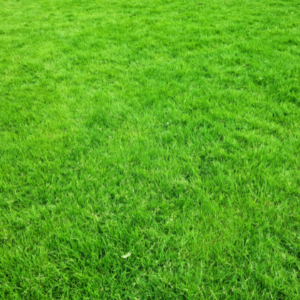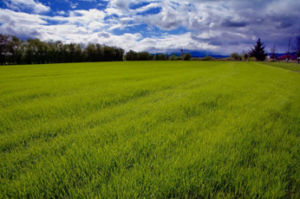The short answer is yes, of course! Imagine what would happen to your front yard if you never applied fertilizer, weed control, pest control, or water. It may not die, but it will get unhealthy rather quickly.
And when that process starts, it’s challenging to reverse. Let me tell you a personal story to emphasize my point.
Why Is Regular Maintenance Important?
 It was summer 2011, and I had just recently moved into a new house (old house but new to me). This house had a lush front yard when I moved in, but you remember the drought we had if you were in Texas in 2011.
It was summer 2011, and I had just recently moved into a new house (old house but new to me). This house had a lush front yard when I moved in, but you remember the drought we had if you were in Texas in 2011.
The average rainfall in the Houston area is 50 inches per year. In 2011 we had less than half of that!
What do you think happened to my front yard? You guessed it, all of my grass died. Many of my neighbors, however, had no problems. Why was that?
First, I have to tell you that I didn’t have irrigation. But neither did some of those neighbors, and their yards were spared.
Now I have to call myself out for not paying attention when I moved in and for not setting up a maintenance program. You know, fertilizer, bug killer, ant killer, weed suppressant, etc.
 I had just moved in and had bigger fish to fry. And to be honest, I didn’t think missing a year would be a big deal. Boy, was I wrong.
I had just moved in and had bigger fish to fry. And to be honest, I didn’t think missing a year would be a big deal. Boy, was I wrong.
Unfortunately, I didn’t consider environmental stresses I have no control over. As a result of my naivety, I had to re-sod the whole front yard, a costly and unexpected expense.
I did add irrigation but also committed myself to a regular maintenance schedule. I personally think Randy Lemmon has the most comprehensive program for homeowners in South Texas.
You can download Randy Lemon’s Fertilizer Schedule here. This program is tailored to our soil type, climate, and average rainfall. I don’t think there is a better schedule if you are looking for a plan for your yard.
The Secret to Detention Pond Maintenance
Fortunately, for detention ponds, we don’t need to go to the extremes it takes to achieve a weed-free, bug-free, red ant free, lush lawn. But we need to remember that doing nothing will give you the same results every time, dead grass replaced by weeds.
Eventually, doing nothing leads to slope erosion and costly pond regrading. But how do we maintain the grass without breaking the bank?
It’s not as hard as you might think. I have to tell you that this information is readily available if you know where to find it. We look to Texas A&M guidance for turfgrass management.
If you want to know more about turfgrass management, feel free to visit: Texas A&M Turfgrass Program. Additionally, you can read about caring for Bermuda grass, the most common grass for detention ponds, here: Maintaining Burmudagrass Lawns.
Utilizing this fact-based, university vetted information, we don’t have to guess at application rates or schedules. We apply 1 pound of soluble nitrogen per 1,000 square feet of lawn twice a year, once in the spring and once in the fall.
This two feedings schedule is the minimum requirement per Texas A&M Turfgrass. The purpose of these feedings is to stimulate root growth.
If we can establish a deep, healthy root structure, the grasses will still be able to reach water during times of high heat and drought. Additionally, healthy plants are naturally resistant to pests, mold, and fungus. And as an added bonus, strong, thick roots prevent soil loss and degradation of pond slopes.
Detention Pond Overseeding
 Overseeding isn’t so cut and dry and depends on several factors. First and foremost, we need to assess the current condition of the vegetation.
Overseeding isn’t so cut and dry and depends on several factors. First and foremost, we need to assess the current condition of the vegetation.
Do the slopes look healthy? Any bare spots or rills? Any dead grass areas or evidence of fungus or mold growth?
Most of these problems can be prevented through regular fertilizer applications. But even the most stringent fertilizing program won’t bring dead grass back. Sometimes additional seed is required.
If the pond is relatively new, overseeding will help fill in those areas with sparse growth. But when should we overseed?
We use two different types of seed in Texas depending on the time of year, Bermuda and Rye. Some hydromulch applicators add millet to the mix, but birds are attracted to millet, so if that poses a problem (think airports), just leave it out. For overseeding, we don’t use millet anyway, so no worries.
We apply Bermuda in the spring (April-May) and Rye in the winter (October-November) in conjunction with fertilizer service. Bermuda is typically used to hydromulch these ponds, so we are simply enhancing and strengthening the stand of grass that is already in place.
This introduces new plants to the pond slope, filling in the weak spots to stabilize the soil and prevent future erosion. But Bermuda only grows during the summer months. What about winter?
What Do You Do in the Winter?
I must tell you that in general I’m not a fan of Winter Rye. First off, if you have a healthy stand of Bermuda why would you introduce another competing grass.
The answer is aesthetics. In the cold months, Bermuda will go dormant and turn brown. On the other hand, Rye won’t sprig until the soil temperature drops to about 65 degrees but will die in the Texas summer sun in early spring. So if you just have to have a green pond all year long, go for it. But before you do, let’s discuss the negatives of Rye overseeding.
Rye grass grows fast and lush, competing with the existing grasses for precious resources like water and fertilizer. Since the Rye grows while Bermuda is dormant, Rye has the advantage, utilizing food and water resources before Bermuda can get to them.
 Additionally, Rye is a nutrient-loving plant, removing more nutrients from the soil than it returns. This stripping of the soil leaves Bermuda starved in the spring, further stressing the plants.
Additionally, Rye is a nutrient-loving plant, removing more nutrients from the soil than it returns. This stripping of the soil leaves Bermuda starved in the spring, further stressing the plants.
Now when spring arrives, we have additional concerns. By this time, the Rye is full and lush, but will begin to wilt and die upon the first heat snap in spring. Remember that Bermuda is now moving into its growth stage and needs sunlight for photosynthesis.
The Rye needs to be immediately cut to allow Bermuda to grow, but we rarely see this in the real world. Of course, if the pond is mowed monthly and intentionally maintained, these issues can be avoided. So now you know why it’s even more important to fertilize in the spring if you use winter Rye.
You may be thinking that Rye is just a waste of money at best and a pond killer at worst. But there is a place for Rye. If your pond is new and growth is sparse, using Rye is better than bare slopes in the winter. Those Rye grass roots will hold the soil in place during the winter months until we can get Bermuda to grow in the summer.
But remember that upon the first heat snap, the Rye needs to be scalped short to allow Bermuda to thrive. Additionally, Bermuda should always be added to the spring fertilizer schedule when using Rye in the winter.
Budgeting for Detention Pond Maintenance
Remember, the idea here is to develop a healthy stand of grass.. Once we get that established, there should be no need for any additional overseeding. The only maintenance requirements are spring and fall fertilizer applications and monthly mowing.
Eliminating this maintenance may be a great way to save on the CapEx budget when dealing with property owners and annual budgets, but in reality, this is just kicking the can down the road. The money saved on maintenance will be used (and then some) to repair pond deficiencies resulting from a lack of maintenance.
A maintenance budget is a fixed, expected cost that is easy to manage throughout the year compared to the surprise of a pond repair. The big difference is that in my experience, property managers and owners don’t like surprise costs, especially big, unexpected ones. Let’s look at a hypothetical example.
We will use an average size 2-acre pond and compare 5 years of maintenance to a single event pond repair.
Maintenance of 2-acre total pond with 1 acre of slopes:
- Mowing 12/yr.
- Outfall/Pilot Channel maintenance in conjunction with monthly mowing
- Fertilizer 2/yr.
- Overseed 2/yr.
Total cost per year = $6300. Remember this includes overseeding every 6 months, which can be eliminated when the slopes are healthy. Bringing the annual cost down to $5500. So in our 5 year period the maintenance total is between $27,500-and $31,500.
The cost to regrade a 2-acre pond with a quality hydromulch product and topsoil or chemical additives to amend the existing soils is in the $40-$50K range. The differences (aside from the unexpected expense of repairs) are many, including reducing vermin, snakes, and mosquitoes as well as the obvious aesthetics.
But the most significant benefit is that you can fix costs and spread them out through the year with regular maintenance. This will give you peace of mind and free your time to better serve your tenants.
Unsure of where to go from here? Give us a call at (832) 554-6654, and we would be happy to schedule a complimentary on-site assessment.

